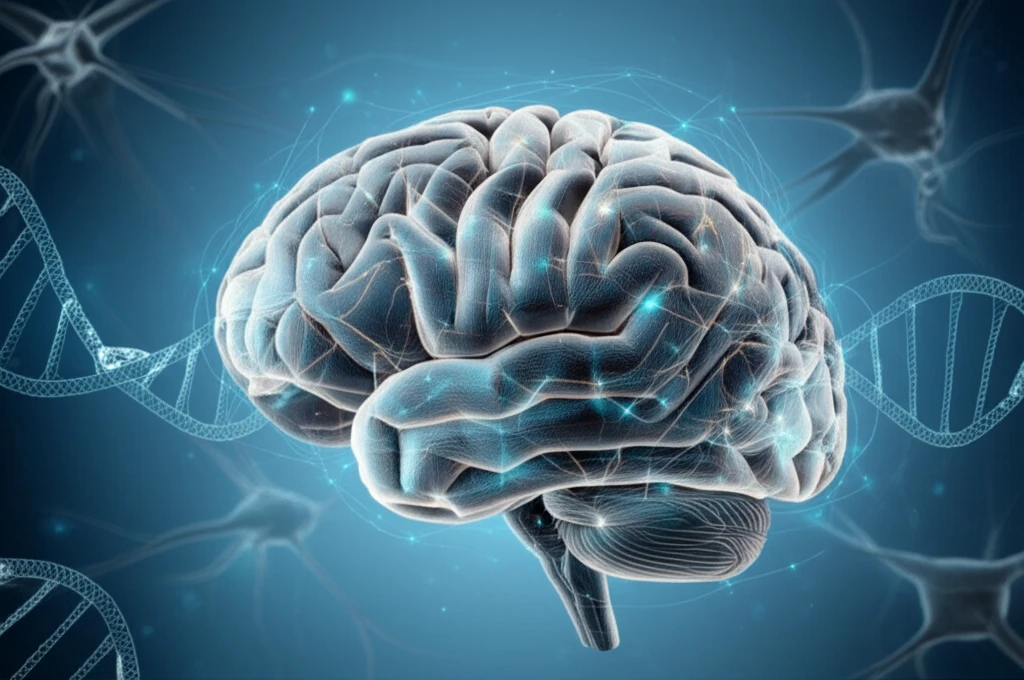
Unlocking the Schizophrenia Puzzle: How Metabolic Insights and Brain Connectivity Can Transform Treatment
"New research reveals potential therapeutic targets by exploring the link between atypical antipsychotics, metabolic pathways, and brain function in schizophrenia patients."
Schizophrenia, a complex and chronic mental disorder, affects millions worldwide, impacting their thoughts, feelings, and behaviors. While current treatments, primarily antipsychotic medications, can help manage symptoms, they don't always work for everyone, and often come with significant side effects. This has spurred researchers to explore new avenues for understanding and treating this debilitating condition.
Two recent studies presented at a Biological Psychiatry conference shed light on potential new therapeutic targets for schizophrenia. The first investigates how atypical antipsychotic drugs (AAPDs) influence stress-related metabolic pathways, while the second explores the relationship between brain connectivity, particularly in reward-related areas, and symptom dimensions in schizophrenia. These findings offer promising leads for developing more effective and personalized treatments.
By examining the intricate interplay between metabolic processes, brain function, and schizophrenia symptoms, these studies pave the way for a more comprehensive understanding of the disorder and highlight the potential for innovative therapeutic interventions.
Metabolic Pathways: A New Target for Atypical Antipsychotics?

One study, led by HuaLin Cai, Jeffrey Yao, and Xiang Zhou, explored the therapeutic efficacy of atypical antipsychotic drugs (AAPDs) by examining their impact on multiple stress-related metabolic pathways in schizophrenia patients. The researchers hypothesized that AAPDs exert their effects, at least in part, by modulating these pathways. Their prior animal studies pointed to a specific panel of biomarkers reflecting these stress-related metabolic changes.
- At baseline, schizophrenia patients showed increased plasma levels of choline, allantoic acid, corticosterone, cortisol, and lysophosphatidylcholines (LysoPC16:0; 18:1; 18:0).
- Conversely, they had decreased levels of hypoxanthine, uric acid, inosine, progesterone, and phosphatidylethanolamines (PE16:0/22:6; 18:0/22:6).
- Following four weeks of AAPD treatment, creatine, inosine, and PEs increased, while cortisol levels decreased, with FEAN-SZ patients showing the most significant changes.
- The metabolic profiles of healthy controls, schizophrenia patients at onset, and those in remission (after four weeks of treatment) were clearly distinguishable using a PLS-DA model, achieving a high accuracy of 95.9% in classifying and discriminating the subjects.
Future Directions: Integrating Metabolic and Brain Connectivity Insights
These studies represent significant steps forward in our understanding of schizophrenia. By linking metabolic abnormalities with brain connectivity patterns and symptom dimensions, researchers are beginning to paint a more complete picture of the complex biological underpinnings of this disorder. Future research should focus on integrating these findings to develop more targeted and effective interventions that address both the metabolic and neural circuit dysfunctions associated with schizophrenia. This may involve combining pharmacological approaches with targeted therapies aimed at improving brain connectivity and cognitive function, ultimately leading to better outcomes for individuals living with schizophrenia.
